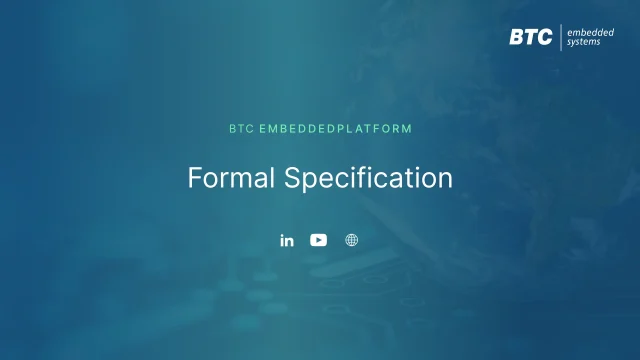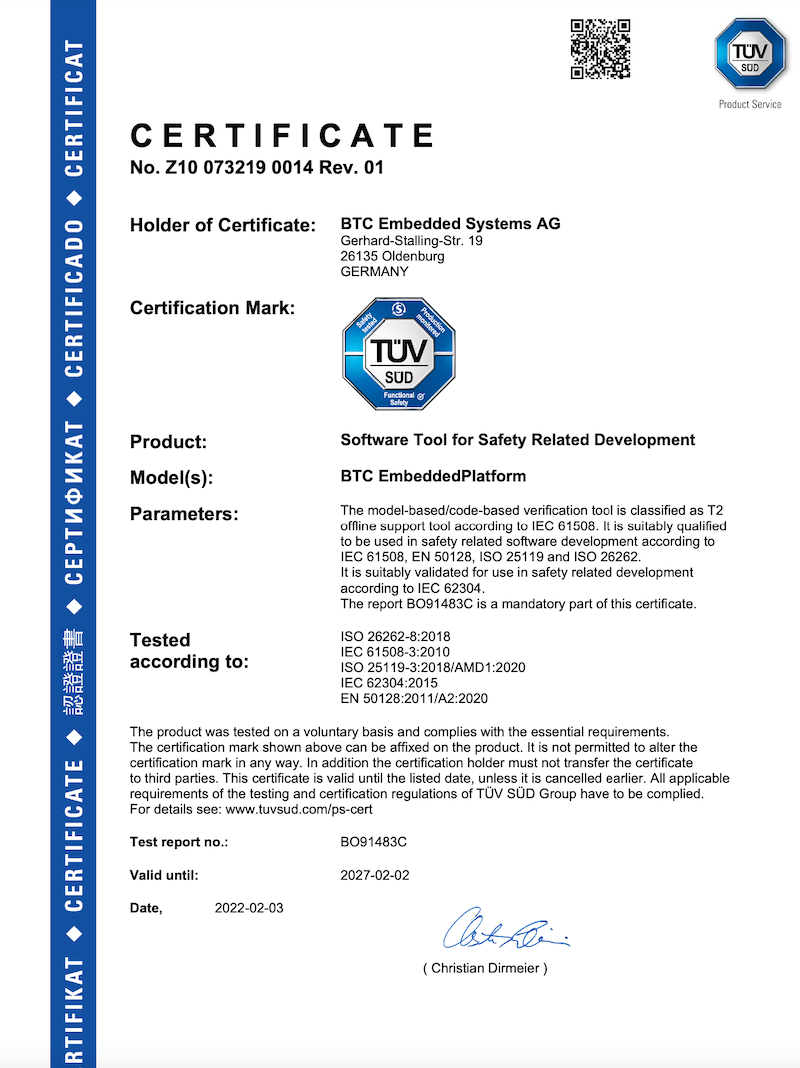Close
Intuitive formal specification of safety requirements
In most development projects today, requirements are created and managed using informal natural language.
As natural language typically leaves some room for interpretation, there’s the possibility that function developers or test engineers ultimately implement a different behavior than intended.
With a semi-formal or formal notation in BTC EmbeddedSpecifier, you can transform your safety requirements into a clear, unambiguous and machine-readable representation – improving their quality and making them much more valuable for the following steps in the development workflow.


From our perspective, formal notations have not gained more acceptance in embedded development projects for two primary reasons:
Formal languages like LTL are often considered to be too difficult to use
They do not provide enough traceability towards existing informal requirements.
With Universal Pattern, we address both issues efficiently. The graphical representation serves as an editor and at the same time as documentation, making the formal requirement easy to create, understand and review. We could call this “Model-based Requirements Engineering”.
A typical formalization workflow starts with the import of existing natural language requirements. The intuitive user interface guides you through the formalization process in three main steps:
In the first step, individual expressions or events within the requirement are identified as so-called “macros.”
In a second step, these macros get graphically structured to define their relationship and timing behavior.
In the last workflow step, the macros are mapped to real interface objects of the system-under-test – making the requirement formal and machine-readable.
With natural language requirements, the definition of requirement coverage is always a tricky question. How can we be sure that a test case really covers its linked requirement? How can we be sure that one test case is enough to fully cover a requirement?
The answer to these questions typically relies on manual reviews.
Thanks to the machine-readable nature of the formalized requirements, you can directly use them within several verification use cases and dramatically improve the quality and completeness of the verification process:
In a traditional requirements-based testing process, each test case is only evaluated against the requirement from which is was derived. But what if test case N°5 violates requirement N°10? Formal Test performs an automatic cross check of all test cases against all formalized requirements. This allows you to detect side effects without any additional testing effort.
Should a particular formal requirement not be fully covered by existing test cases, the Requirements-based Test Generation add-on allows generating missing test cases automatically, providing you 100% coverage for all requirements.
Thanks to our powerful model checking technology, you can automatically obtain mathematically complete proof which guarantees a safety requirement can never be violated by your implementation. In case a requirement can be violated, we generate a counter example in the form of a test case.

您有任何问题或希望看到我们的工具在实际项目中运行吗?如果是这样,请使用下面的链接安排会议,我们的工程团队成员将很乐意向您展示功能和用例,并直接回答您可能遇到的任何问题。
Sharing insights on embedded software development, model-based design, automatic code generation and ISO 26262 compliant testing.

Wolfgang Meincke
Stuttgart, Germany

Dr. Tino Teige
Oldenburg, Germany




Step into the formal world with ease!
Copyright © 2025 BTC Embedded Systems